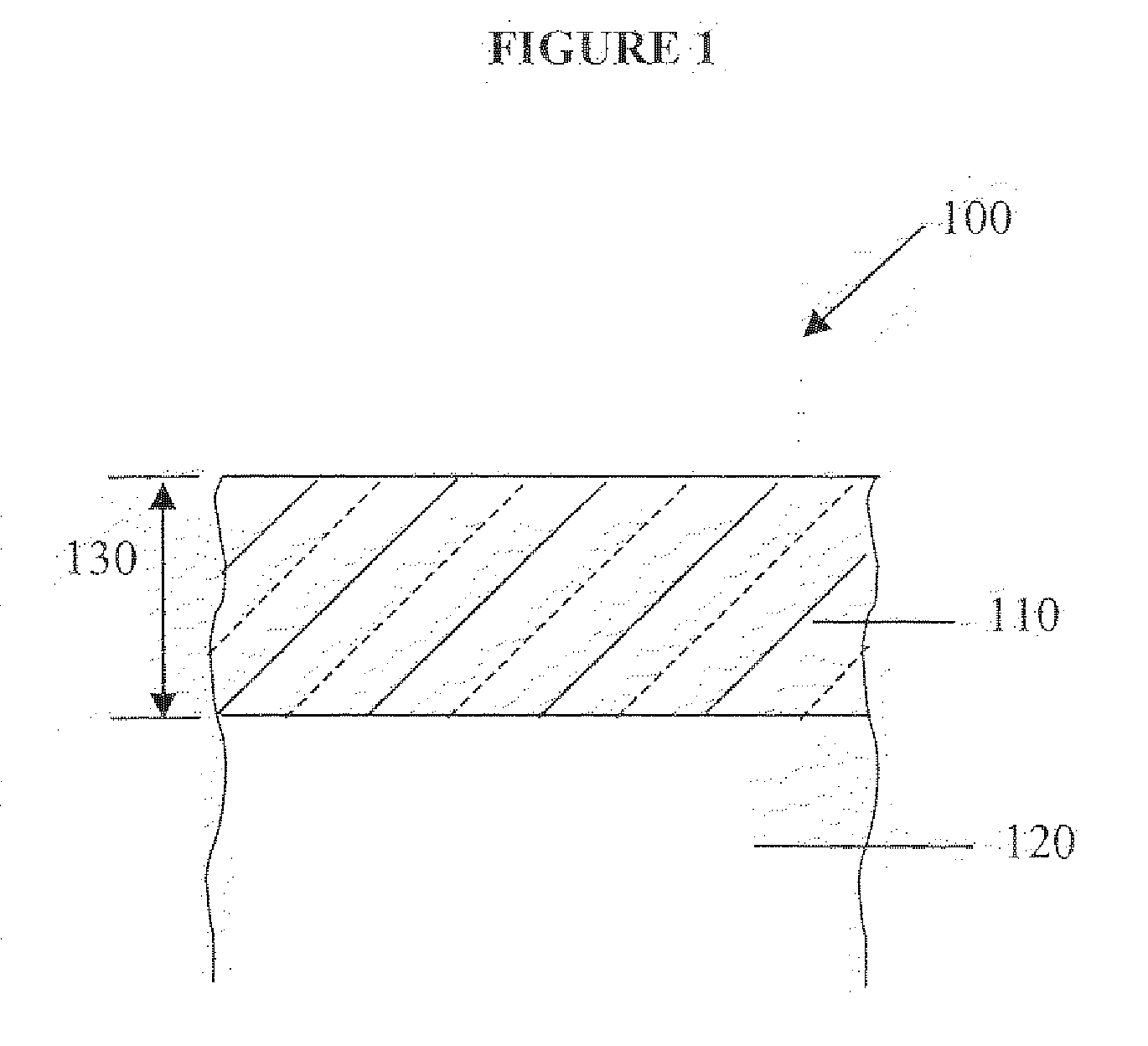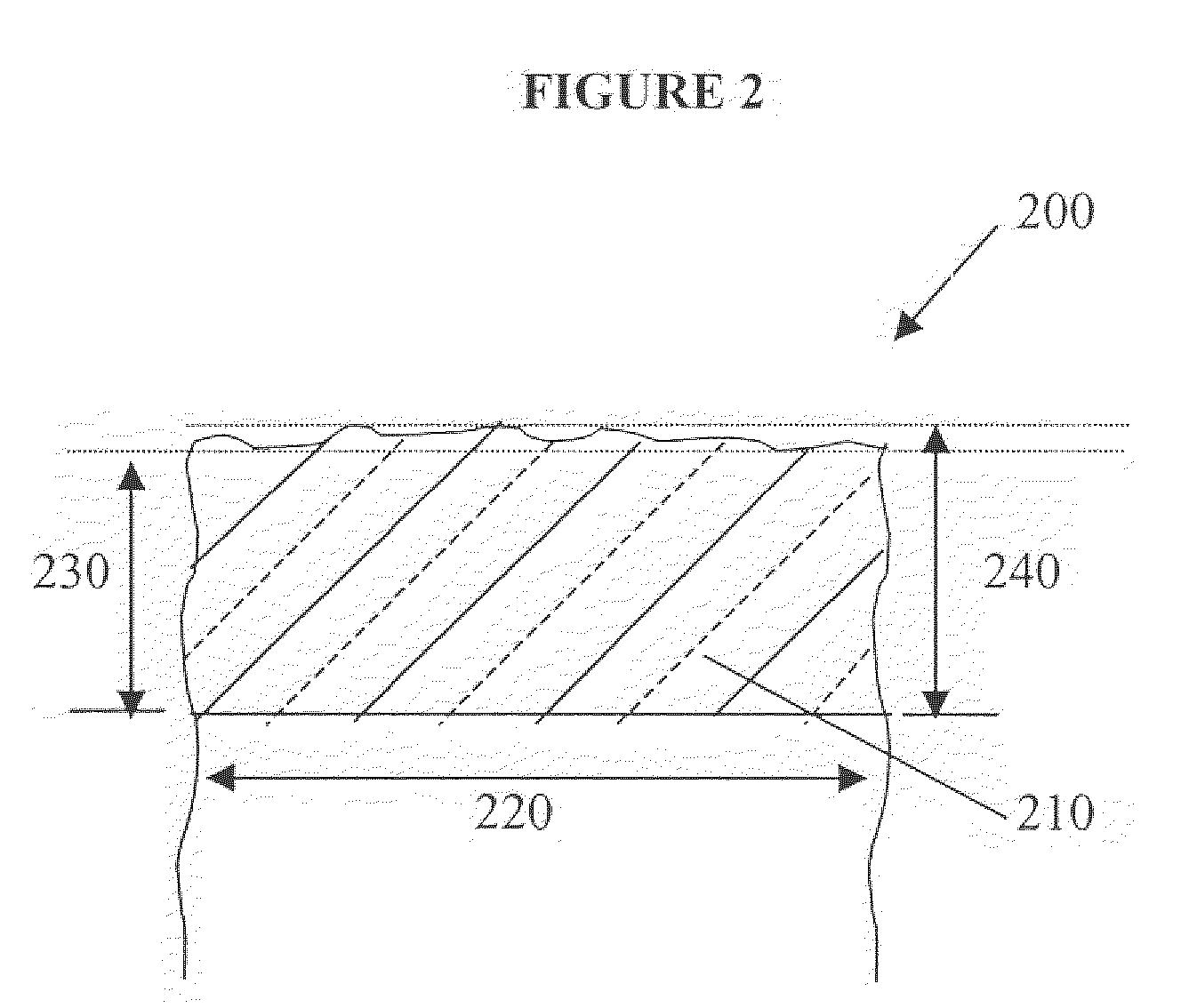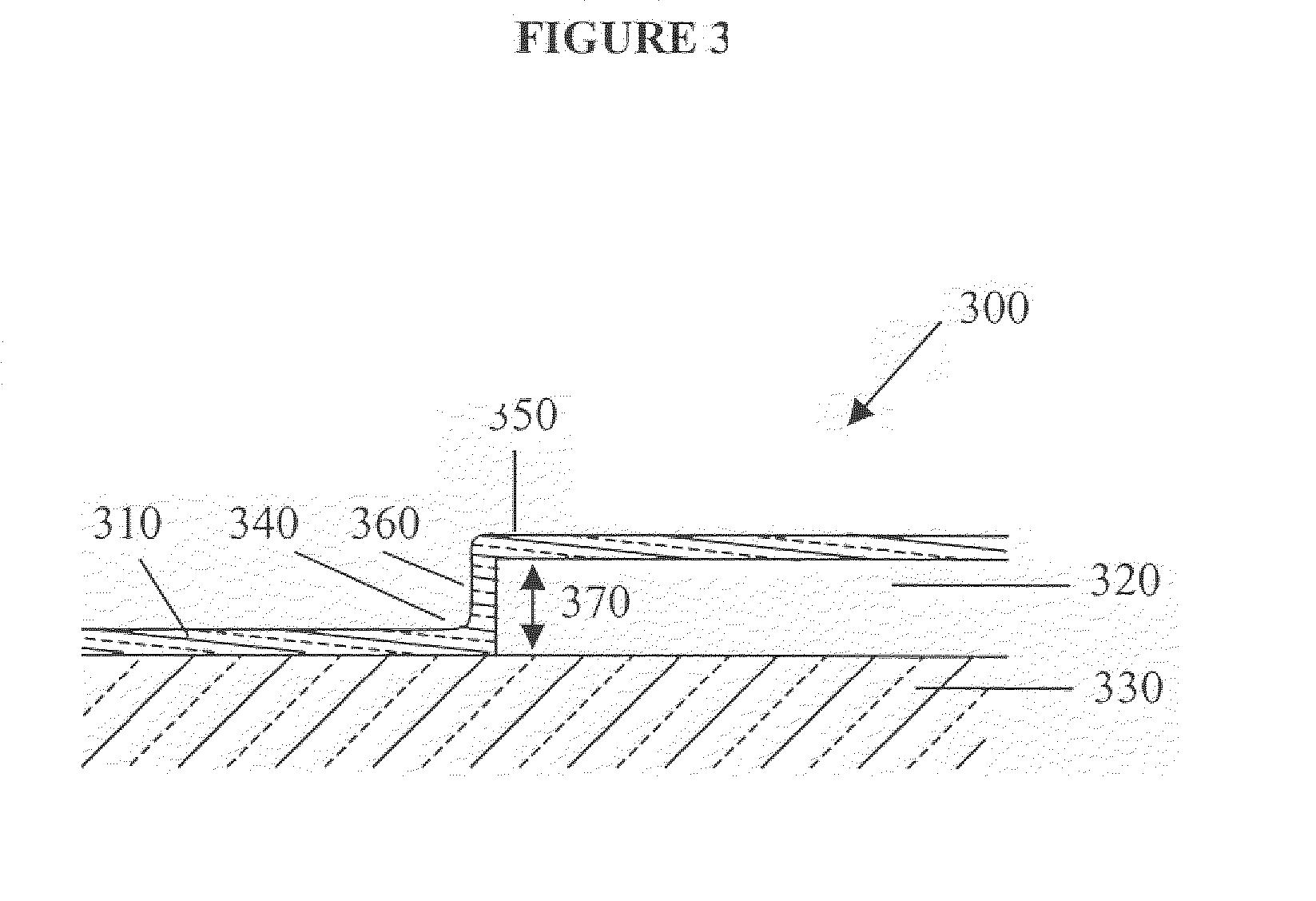Thin Films and Methods of Making Them
a thin film, silicon-containing technology, applied in the direction of sustainable manufacturing/processing, final product manufacturing, nanoinformatics, etc., can solve the problems of difficult deposition of very thin (e.g., about 150 or less) silicon-containing films using silane, uneven elemental composition of doped thin films, etc., to increase the yield of semiconductor manufacturing devices and increase the yield of devices
- Summary
- Abstract
- Description
- Claims
- Application Information
AI Technical Summary
Benefits of technology
Problems solved by technology
Method used
Image
Examples
example 1
[0095] An eight-inch diameter (200 mm) silicon wafer substrate having a 1,000 SiO.sub.2 layer was placed into the reactor chamber and allowed to reach thermal equilibrium at 450.degree.C at 40 Torr pressure under a flow of 20 standard liters per minute (slm) of high purity hydrogen gas. Trisilane was introduced to the chamber by passing high purity hydrogen gas through liquid trisilane using a bubbler (maintained at room temperature using a water bath around the vessel containing the trisilane) connected by a feed line to the chamber. A flow rate of 180 standard cubic centimeters per minute (sccm) of the hydrogen / trisilane mixture, along with a flow of 90 sccm (inject) of diborane (100 ppm, 90 sccm mixed with 2 slm high purity hydrogen), was then passed into the reactor for four minutes. A continuous, boron-doped, amorphous silicon film having a total thickness of 56 and a surface roughness of about 2 rms (comparable to the underlying silicon dioxide) was deposited on the silicon d...
example 3
[0098] The process of Example 1 was repeated, except that the flow rate was 228 sccm, diborane was not used, and the deposition time was two minutes. A continuous amorphous silicon film having a total thickness of 28 and a surface roughness of about 2 rms (comparable to the underlying silicon dioxide) was deposited on the silicon dioxide layer at a deposition rate of 14 per minute. A layer of epoxy was then applied to facilitate cross-sectional sample preparation.
[0099] Figure 10 is reproduction of an electron micrograph showing a cross section of the resulting substrate showing the underlying SiO.sub.2 layer (oxide), the deposited amorphous silicon film (a-Si), and the overlying epoxy layer (epoxy). This example illustrates the deposition of an extremely thin, continuous, uniform amorphous silicon film in the absence of a dopant or dopant precursor. Furthermore, nucleation over oxide is sufficiently fast as to enable deposition in two minutes or less, even with pressures in the ran...
example 4
[0100] An eight-inch diameter (200 mm) silicon wafer substrate having a 1,000 SiO.sub.2 layer was placed into the reactor chamber and allowed to reach thermal equilibrium at 600.degree.C at 40 Torr pressure under a flow of 20 standard liters per minute (slm) of high purity hydrogen gas. Trisilane was introduced to the chamber by passing high purity hydrogen gas through liquid trisilane using a bubbler (maintained at room temperature using a water bath around the vessel containing the trisilane) connected by a feed line to the chamber. A flow rate of 180 standard cubic centimeters per minute (sccm) of the hydrogen / trisilane mixture, along with a flow of 90 sccm (inject) of diborane (100 ppm, 90 sccm mixed with 2 slm high purity hydrogen), was then passed into the reactor for 15 seconds to deposit an amorphous boron-doped silicon film having a thickness of 100 . Under these conditions, the delivery rate of trisilane to the substrate was about 0.1 gram per minute. The deposition rate ...
PUM
| Property | Measurement | Unit |
|---|---|---|
| surface area | aaaaa | aaaaa |
| surface area | aaaaa | aaaaa |
| diameter | aaaaa | aaaaa |
Abstract
Description
Claims
Application Information
 Login to View More
Login to View More - R&D
- Intellectual Property
- Life Sciences
- Materials
- Tech Scout
- Unparalleled Data Quality
- Higher Quality Content
- 60% Fewer Hallucinations
Browse by: Latest US Patents, China's latest patents, Technical Efficacy Thesaurus, Application Domain, Technology Topic, Popular Technical Reports.
© 2025 PatSnap. All rights reserved.Legal|Privacy policy|Modern Slavery Act Transparency Statement|Sitemap|About US| Contact US: help@patsnap.com



